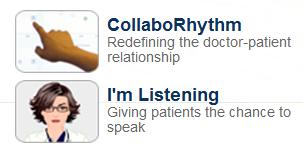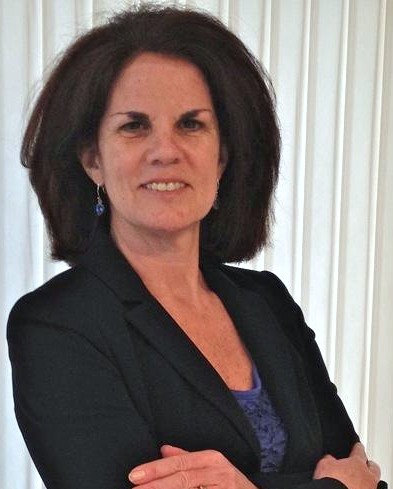Generating Mobile Engagement Through Consumer Segmentation, Crowd Sourcing and Personalization
 June 14, 2010
June 14, 2010  World Congress Leadership Summit on Mobile Health, July 29th & 30th, Boston
World Congress Leadership Summit on Mobile Health, July 29th & 30th, Boston
Healthcare organizations are taking advantage of the consumer’s strong demand for smart phones and mobile health apps. They are piloting new health initiatives through SMS (text), Mobile Web and Mobile Applications and learning about the opportunities and barriers to accelerate adoption and usage.
Industry leaders understand the need to tailor their mobile offerings to specific consumer segments and to personalize the experience to sustain engagement.
During our session, you will learn how our panelists are utilizing mobile to enable care access and compliance, deliver health education as well as influence and track health behaviors. They will show examples of their mobile health initiatives and share insights they’ve gained from segmentation, personalization and crowd sourcing. The panelists will also offer their vision for mobile health opportunities in the near future.
You will gain a unique perspective from companies on this panel which are bringing mobile health offerings to consumers directly as well as through the healthcare delivery and health plan channels. As you will see, each business channel has its own sources of value to engage the consumer.
Facilitator:
Sherri Dorfman, MBA, CEO, Consumer eHealth Engagement Specialist, Stepping Stone Partners
Panelists:
- Bud Flagstad, Vice President, Strategic Initiatives, UnitedHealth Group
- Julie Kling, Mobile Strategy Group, Humana
- Tim Kieschnick, Director, User Experience Internet Services Group, Kaiser Permanente
- Alexandra Pelletier, Team Lead, Program and Product Development, Center for Connected Health, Partners HealthCare System
- Benjamin Rubin, CTO and Co-Founder, Zeo Inc.
Listening Online, the First Step to Consumer eHealth Engagement
 June 1, 2010
June 1, 2010  In a recent post on “Blazing Your Social Media Engagement Path”, I touched on the value of listening to your target consumers. Their words can bring tremendous insight to your organization about their needs and frustrations around managing their health and the health of loved ones, young and old.
In a recent post on “Blazing Your Social Media Engagement Path”, I touched on the value of listening to your target consumers. Their words can bring tremendous insight to your organization about their needs and frustrations around managing their health and the health of loved ones, young and old.
Start Thinking about the Value of Listening Online
Consumers are talking in discussion forums, on Facebook, through tweets and blogs. They have the power to impact their social network while sharing their thoughts, experiences and ideas. To tap into this insight and influence, companies are using an online listening platform which gathers, filters and reports on these consumer conversations. Companies are acting on this new information strategically and tactically through their product, program, marketing and customer service groups.
In addition to these very public venues, companies are investing in private online communities and inviting consumers to share their health experiences using words, photos and videos. Not all online community platforms are the same. There are only a few platforms that enable the consumers to brainstorm, vote and prioritize ideas for new products, services and programs. Companies are leveraging this cost effective online research space by describing new concepts, presenting product screen shots and prototypes and even mocked up marketing materials to ensure that their offering is properly positioned and messaged. And they are getting this input and feedback within hours instead of days for immediate response to meet market needs.
Although businesses are often tempted to get started and figure it out from there, they can significantly benefit from beginning with an online listening plan which can be refined every step of the way. Once their goals are identified, it is easier to evaluate public and private online venues, potential technology platforms, determine resource requirements and define success metrics and measurements.
Online Listening Goals
Part of the planning process entails understanding best practices. While defining your online listening plan, consider these ‘use case’ goals:
- Increase Consumer/Patient Satisfaction. Listen to the words and the tone that these consumers are using. What are they complaining about? Is there a misunderstanding that you can clarify? Are they having difficulty finding resources that you already offer? Can their stories be shared internally for training purposes?
- Improve Consumer/Patient Education. People are actively discussing their health issues online. Many industry experts recognize the anxiety that they feel trying to understand their health problems or interpret their options. Which health issues cause the most confusion, concern and cost? Which patients are having the most “risky” problems (e.g. medications, treatments)? What are their biggest challenges? Are there more effective treatments, less costly options that consumers need to consider?
- Co-Create with Consumers through an Online Advisory Board to Design Offerings for Engagement
- Enhance Online Products. Within a private online community, your target customers can provide input and feedback on your proposed offerings. Which features are “need to haves” versus “nice to haves”? How can you identify and define the functionality that is missing such as mobile? Within the context of their life, how can your product be enhanced to help them maintain control over their health?
- Develop and Market Compelling Programs. The online private community can also be leveraged to “capture the words” of your target audience, shaping both your program design and the marketing of that program. How are these consumers articulating the value they see in the program? What changes would they make if they were creating the program?
Benefits of Listening Extends Throughout your Company
As you devise your own list social media goals, think about which departments within your company will benefit. One best practice is to assemble a cross- functional team to participate in the planning and realize the gains of your online listening efforts.
It all begins with the first step of listening. Engaging consumers is the next step.
New Models for Leveraging Social Media for Consumer Engagement
 May 20, 2010
May 20, 2010
 Healthcare Unbound Conference Panel, San Diego, CA July 19th
Healthcare Unbound Conference Panel, San Diego, CA July 19th
Leaders in the healthcare industry are using social media in entertaining, educational and emotional ways to engage and empower the consumer.
Research has shown the cost savings resulting from consumers' use of social media to support each other. Consumers experience less depression and isolation as they navigate their own health issues. However, social media has moved beyond support to motivate consumers in new, exciting and very personal ways which will be measured through “social analytics”.
Where are we headed with social media and how are these leaders planning to get there?
During this panel, you will see and hear about examples:
- Social Media designed to attract and motivate specific consumer “segments” such as teens, seniors, caregivers, employees and patients
- Social Media intervention developed by teens for teens
- Gaming and social networks with competitions and rewards for healthy behaviors
- Differentiated “private” and “public” social media initiatives which span business goals
- New framework for generating consumer engagement incorporating financial, social and personal dimensions
Panel Moderator: Sherri Dorfman, MBA, Consumer Engagement Specialist, CEO, Stepping Stone Partners
- Paul Puopolo, Director, Consumer Innovation, Humana
- Eric Zimmerman, Chief Marketing Officer, RedBrick Health
- Rick LeMoine, MD, FACP, Chief Medical Information Officer, Sharp HealthCare
- Paul To, CEO & Founder, Emota.net
- Kendra Markle, Stanford Persuasive Technology Lab, AlterActions.org
Blazing Your Social Media Engagement Path
 May 18, 2010
May 18, 2010  “We’re already using Facebook, YouTube and Twitter. Where do we go from here?”
“We’re already using Facebook, YouTube and Twitter. Where do we go from here?”
“We have several separate and disconnected social media efforts now but we want to bring them together as part of a social media plan.”
“How can we listen online and engage consumers around wellness?”
“Where do we begin to develop a private online community for ‘Women’s Health’ to use for our product research?”
Businesses are increasing their investments and are ready to move to the next level in their social media efforts. They are forming “Social Media Committees” to begin defining and prioritizing their social media initiatives. Every company can create a unique social media plan drawing upon their set of healthcare relationships, partnerships and resources to deliver value to the consumer. However, how many are actually designing their plan with consumer engagement in mind?
Viewing Your Plan from the Consumers’ Eyes
As you are creating more social media, keep in mind that consumers are already overwhelmed with the current number of online healthcare destinations for them to learn, share and connect with others like them. Before investing any more resources, think about how you can bring consumers relevant and compelling “content” and capabilities that they will value (as opposed to what you have to offer).
Stepping Stones to Follow:
After you’ve defined your goals and assembled your team, these are the steps to move your social media initiatives forward.
1) Listening to Your Target Consumers (Segments)
One essential best practice is to gather insight to understand the health and wellness issues and interests of these consumers and to leverage that information into action. Consider all the opportunities that you can uncover by mining “consumer- generated content” both within your own company’s social media and from online conversations outside of your site and your social media boundaries.
What makes this more complex is that your target consumers have varying needs so you will want to listen to the needs of each of your priority consumer “segments”. For example, you may segment your target consumers by condition, gender or life stage. Where will you go to listen to your priority consumer segments?
2) Engaging Consumers & Acting on their Insight
Through exploratory discussions with your target consumers, you can discover areas of value such as new online decision tools, new ways to “package” content and new channels to deliver this content. Often times, their ideas shed light on new partnerships which yield differentiated products, services and programs for your company. These insightful ideas are often from your key contributors. The ideas make your community dynamic and motivate others to participate. How can you exploit their influence across your social media?
Once new opportunities are surfaced, the key is to define them with your target consumers. By “co-creating” with them, you will ensure that you have conceptualized, developed and validated these new offerings to meet their evolving needs.
Another benefit of engaging consumers is capturing their words which can be injecting into your marketing channels (e.g. website, social media, program brochures, etc).
3) Evaluating Your Social Media Engagement Initiatives
You will need both qualitative and quantitative information to evaluate your social media initiatives against your business goals.
The qualitative information that you collect through your social media efforts is very valuable since it gives you and your team insight to guide your product, partnership and marketing strategies. It is essential to track how these insights are being used by your company to measure their real value (e.g. saving money, generating revenue).
There is a set of quantitative metrics that you will benchmark and monitor to identify your most effective tactics. These metrics are often around participation in your various social media activities.
How About Your Social Media Engagement Path
- What have you learned while listening to consumers online?
- Are you launching new engagement tools to get your target consumers to interact with you?
- How are you mining and leveraging insight from consumer generated content to inform your company’s business strategies?
You have an opportunity to devise a comprehensive plan with best practices and processes for exchanging value with your target consumers through your social media initiatives. Instead of launching tools in isolation, take the lead in bringing your team together to develop a Social Media Engagement Plan designed with your business goals in mind.
Patients in Control Demonstrated in MIT's New Media Medicine Group
 May 11, 2010
May 11, 2010  Recently, I sat down with Dr. John Moore, Researcher in the New Media Medicine Group of the MIT Media Lab.
Recently, I sat down with Dr. John Moore, Researcher in the New Media Medicine Group of the MIT Media Lab.
“With our CollaboRhythm, we are redefining the relationship between the patient and their doctor”, explained John. “Instead of being in control, the doctor is serving as a coach to help the patient with their care planning and delivery.”
As I watched the demo, what surprised me the most was that the patient was interacting with the flat screen displaying her information and deciding about her upcoming treatment. John described what was happening. “This is ‘shared decision making’ in action where the patient determines what changes she wants to make and even schedules her medication while the doctor is by her side providing guidance as needed.”
When the patient leaves her doctor’s office, she is ready to follow through on the plans she made. “All of the follow- up information has been pushed to the electronic devices that she will rely on. Her pill dispenser has been automatically programmed. Her mobile phone is ready to receive the reminders and the necessary sensors are in place to track her activities”, John mentions with a smile.
Next, I saw a demo of the “I’m Listening” project, designed to bring the patient into her own care management process. The patient is relaxing on a coach in her living room with a cup of coffee as she is having a conversation with an “avatar” on her flat screen television. “The avatar agent asks the patient questions to gather information for her clinician. This gives the patient more freedom to share her story at her own pace”, explains John. When the patient wants to show the sore on her foot to her doctor, she lifts her foot in front of the build- in camera to have a picture taken.
I was interested to learn that this system takes all of the information gathered including the ‘words of the patient’ as well as photos and organizes it for her next doctor's appointment which she schedules. Notice the time savings for the doctor and the convenience for the patient.
With both projects, the patient has a more proactive role in managing their own health, the doctor remains in an “expert” role and their collaboration and communication are enabled through technology.
What About You?
- What are you doing to empower consumers?
- How are you engaging consumers to share their health data with you?
- Are you gathering and organizing the consumers' health information to support care decisions?
Although MIT's patient- focused products were developed in the lab, there is so much we can learn from their approach. They put the patient in control of their health with access to information and collaboration with their clinician for guidance. Technology plays an important role of seamlessly moving the patient's information to where it is needed (e.g. devices) for further interaction. During these interactions, technology enables the collection of patient data to support shared health decisions.


